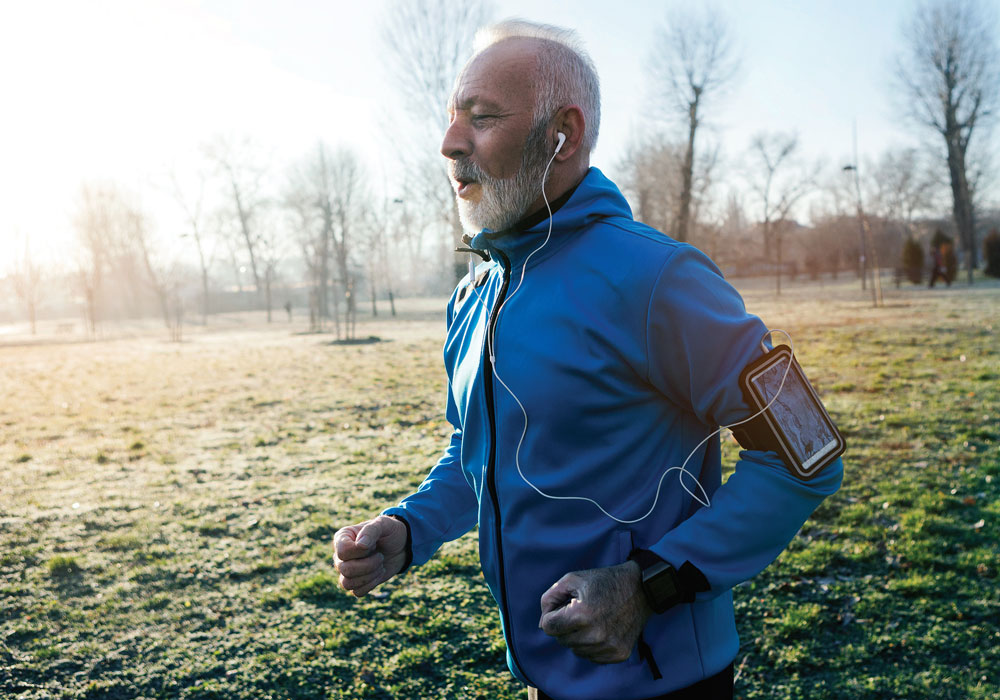By Jyothirmai Gubili, MS, and Donna Wilson, RN, MSN, RRT
Regular, light-intensity exercise and activity has been shown to reduce the risks of fractures, heart disease, and death. Substantial evidence also indicated benefits for cancer-related outcomes, including fatigue, depression, and quality of life. Additional observational data suggested that sustained physical activity may help reduce cancer recurrence and improve overall survival.
What the Research Reveals
Emerging data indicate that low-intensity exercise is beneficial in cancer populations. In a randomized trial of 230 patients scheduled to undergo adjuvant chemotherapy, both a low-intensity home-based exercise program and moderate-to-high-intensity exercise were found to be superior to usual care at the end of the treatment. Both led to significantly better cardiorespiratory fitness, physical functioning, pain, nausea and vomiting, and return to work. A study of 252 patients undergoing chemo also reported significant improvements in anxiety and mood with a home-based walking and resistance training program compared to usual care.
In another randomized trial of 277 cancer survivors, 12 weeks of low- to moderate-intensity exercise was comparable to high-intensity activity in reducing fatigue. The authors found that both activities significantly improved peak VO2 compared to controls. Although the high-intensity exercise had larger long-term (64 weeks) effects compared to low- to moderate-intensity exercise, the groups had no significant differences in measures like hand-grip strength and lower body muscle function.
Secondary analyses of data from a study of 641 cancer survivors who participated in a one-year, home-based nutrition and exercise program revealed strong associations between exercise and improved physical functioning. And a meta-analysis revealed significant reduction in breast cancer risk with both light- and high-intensity exercise, although the latter afforded slightly more protection.
Data on mechanisms underlying the physiological effects of low-intensity exercise are limited; however, a large cross-sectional study associated light-intensity physical activity with benefits in cardiometabolic markers including triglycerides, high-density lipoproteins, glucose, C-reactive protein, BMI, and waist circumference. Also, both high- and low- to moderate-intensity exercise had positive effect on peak oxygen uptake and strength. In addition, a large prospective cohort study of 77,206 postmenopausal women associated mild activity and walking with lower risk of hip fracture.
What Oncology Nurses Need to Know
Current evidence indicates that physical activity has a profound impact on cancer outcomes. Although many investigations focus on moderate- to high-intensity activity, recent findings confirm that low-intensity exercise also improves mood, mobility, and cardiorespiratory fitness. In fact, just 30 minutes a day of low-intensity activity significantly lowered the risk of cancer mortality when compared to sedentary time.
Oncology nurses have the responsibility to teach, motivate, and care by providing an exercise plan for all patients. Ask patients about their physical activity at each clinic visit, including how many times a week they walk or do strength training. Nurses should advise active patients to maintain their routines and encourage inactive patients to start a walking program and look for community programs.
Low-intensity activities are generally safe for most fitness levels, but patients who have just had surgery or are in active treatment should check with their healthcare provider to find out when to safely resume exercise. Walking is a great way to start because it’s easy to incorporate in homes, at malls, or outside. Patients should not think of speed but endurance by walking for 30 minutes, most days of the week. For strength training, they can lift weights or even just water bottles.
When patients understand that exercise helps improve fatigue, cancer-related symptoms, balance, and overall quality of life, they may be encouraged to begin exercising.






